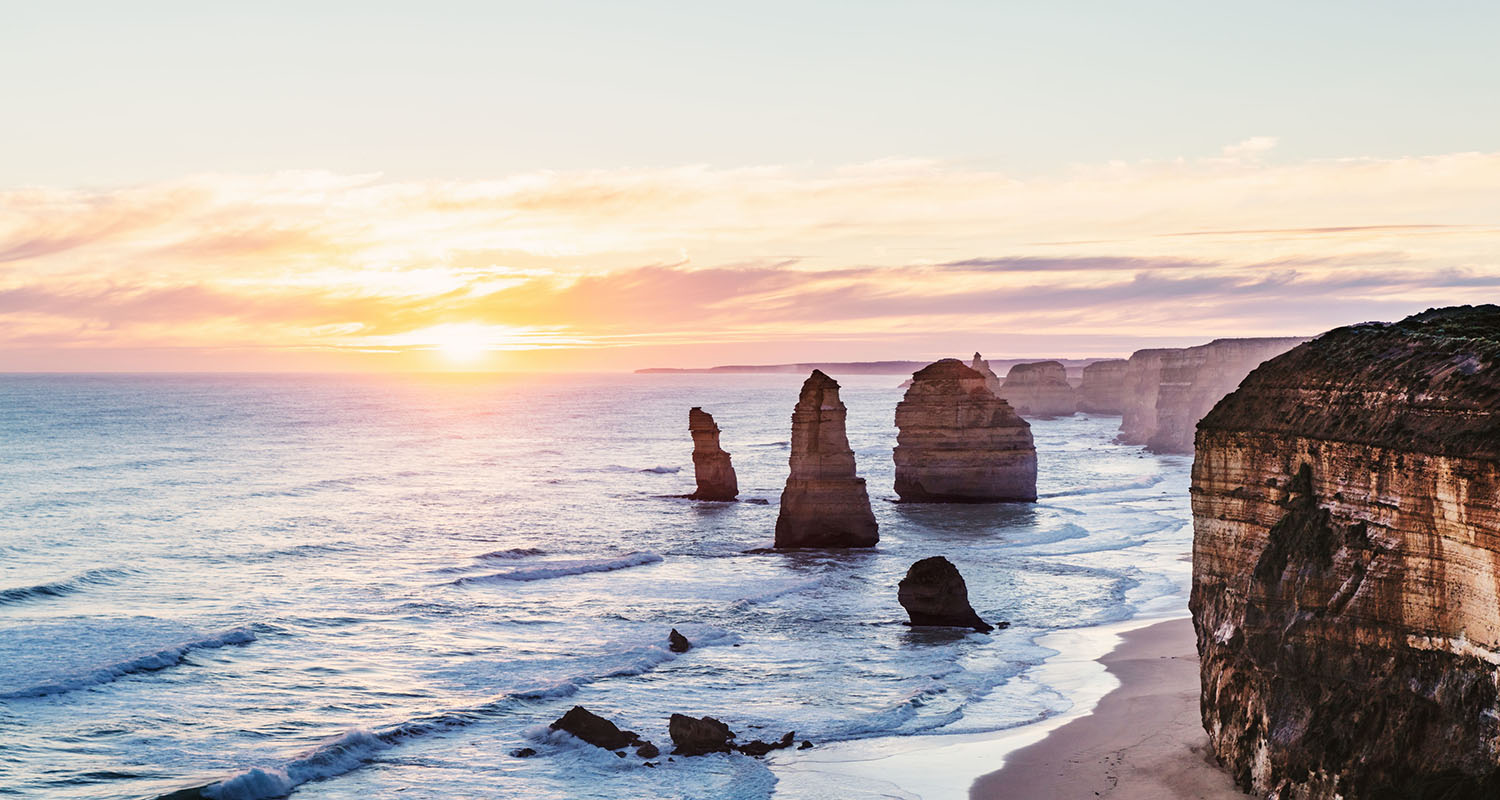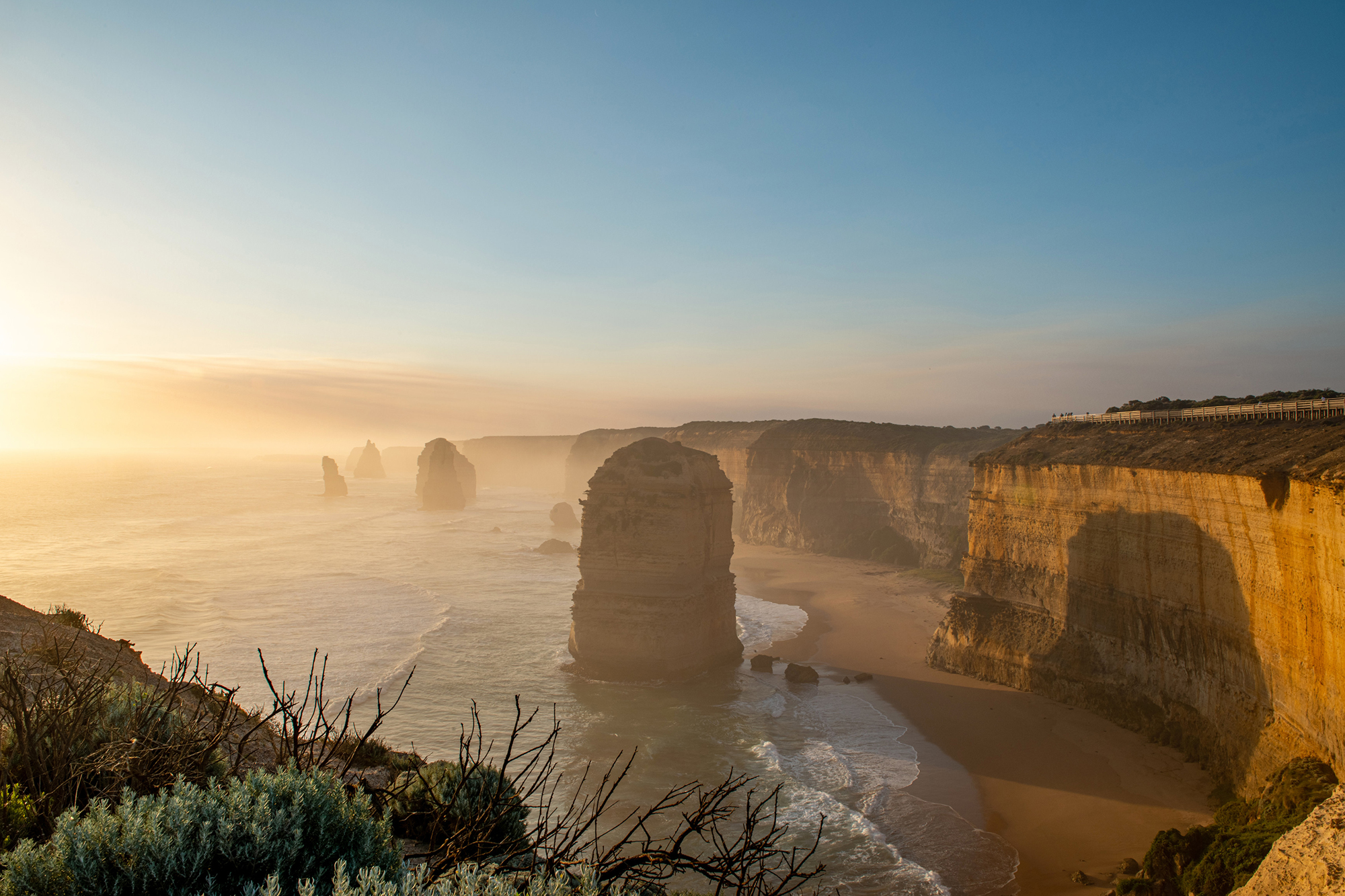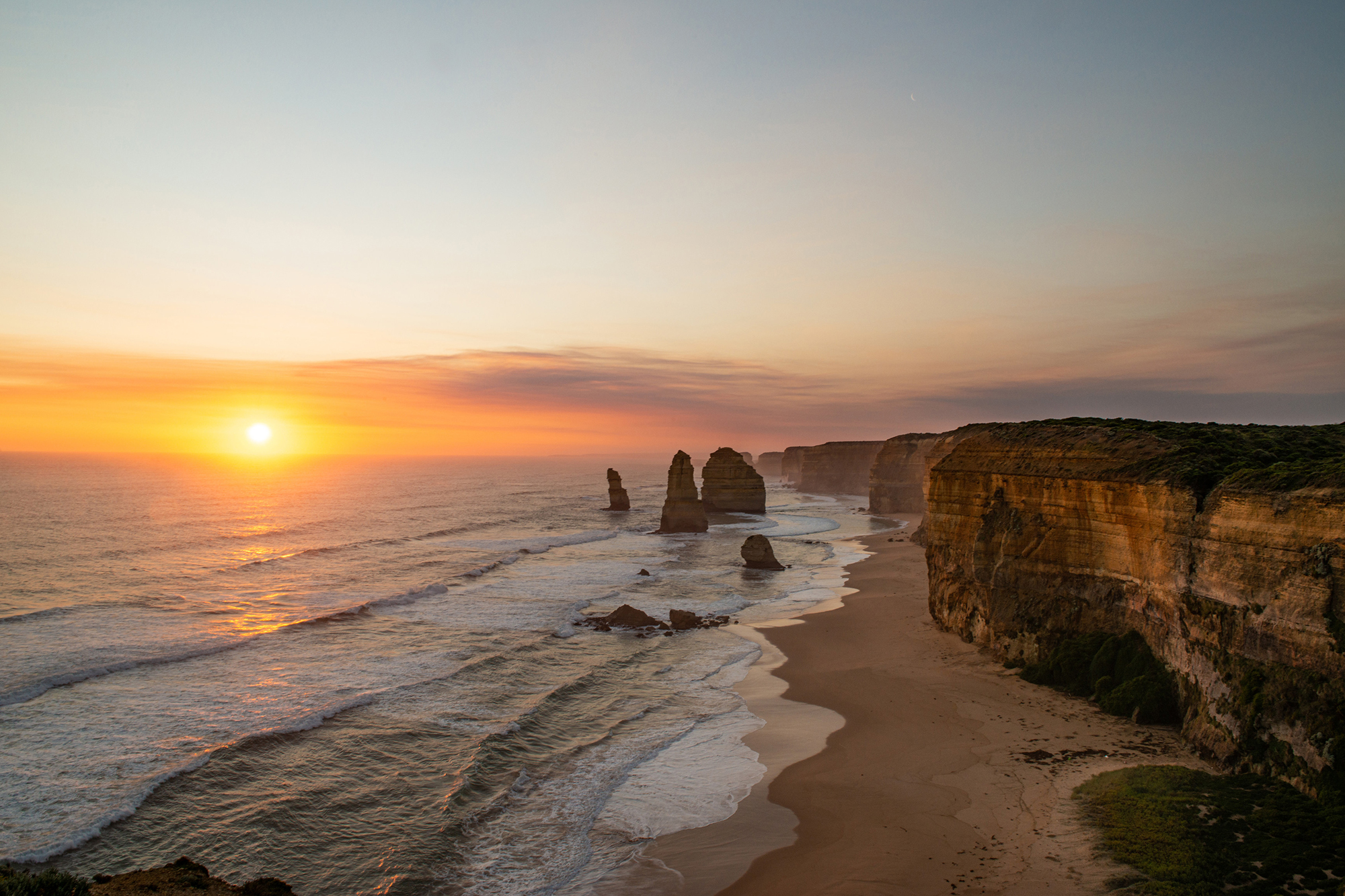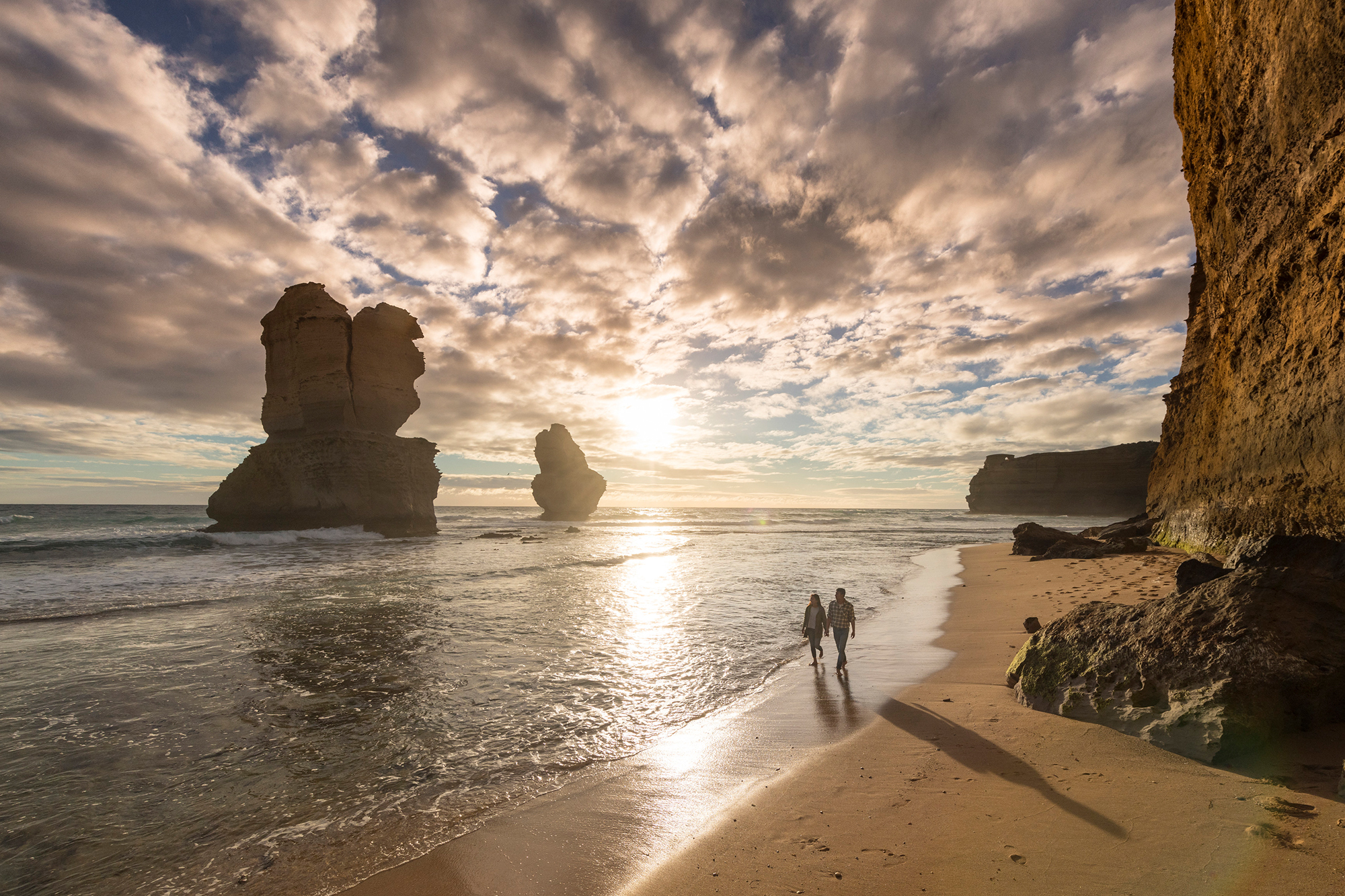
Twelve Apostles: A breathtaking natural spectacle in Australia
If you're on holiday in Australia, you can't miss the Twelve Apostles. The limestone pillars are a unique sightseeing must-see.
27 August 2021
Hotspot Down Under not only breathtaking landscapes and unique wildlife await you, but also one of the most photographed tourist attractions in the country: The Twelve Apostles in the Australian state of Victoria.
Perfect location for sunrise and sunset
The Twelve Apostles are free-standing rocks up to 60 meters high in Port Campbell National Park, west of Melbourne in the Australian state of Victoria. For connoisseurs, the rocks jutting out of the water are one of the highlights of the so-called Great Ocean Road, i.e. the 243 km long road along the Australian south coast. After Ayers Rock - also known as Uluru - the rocks are said to be the most photographed nature-made tourist attraction in Australia. No wonder, with their height they are a breathtaking natural spectacle - especially at sunrise and sunset.


Freestanding rocks - A spectacle created by nature
But don't be confused: Although the name Twelve Apostles suggests twelve cliffs, the spectacle consists of eight limestone pillars no more than 60 meters high. These used to be part of the cliffs and the mainland. Over the years, however, the columns were detached from the coast by wind and waves. Since then, they stand free.
However, the Twelve Apostles are not an eternal natural spectacle, which became painfully obvious in the past years. Because originally the Twelve Apostles consisted of a total of nine columns. In 2005, however, a 50-meter-high column collapsed. In all probability, the remaining columns will not remain in this formation forever. For those who are interested, this means one thing above all: Book your next trip quickly! But it has to be said that there will be similar rocks along the Ocean Route in the future. Because due to the continuous erosion of the adjacent cliff, which is washed out by the waves by about two centimeters every year, more and more limestone columns are formed.
Where the Twelve Apostles got their name, by the way, is still unclear. Until 1922, the natural wonder was called "The Sow & Piglets". Due to the increasing popularity of the natural spectacle, the limestone pillars were eventually renamed.

Route tip
The Twelve Apostles are especially recommended for those who drive along the Great Ocean Route. Those who start from Melbourne, for example, can drive along this route via Geelong and arrive in about four and a half hours. But those who want to enjoy the Great Ocean Road in all its splendour and with all the breathtaking spectacles should plan about four days for the route. This way, one can also marvel at the cities and other sights along the route in peace.

